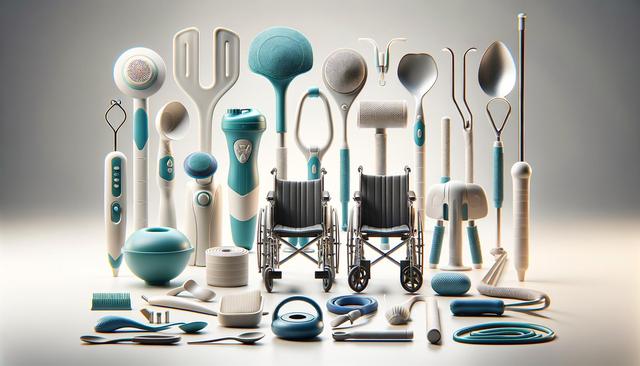Exploring Affordable Stroke Recovery Devices for Home Use
Recovering from a stroke can be a long journey, but accessible and affordable rehabilitation tools can make a meaningful difference.

Understanding the Role of Stroke Recovery Devices
Stroke recovery devices are designed to support individuals in regaining motor function, improving coordination, and restoring independence after a stroke. These tools are often used as part of a broader rehabilitation plan that includes physical therapy, occupational therapy, and sometimes speech therapy. Affordable stroke recovery devices offer a way for patients to continue their therapy at home, which can be especially important for those with limited access to outpatient services or transportation challenges. Devices range from simple hand exercisers to more complex tools that assist with gait training or limb movement.
Home-based rehabilitation tools can significantly enhance progress by allowing patients to practice consistently in a comfortable environment. Repetition is key in neuroplasticity—the brain’s ability to rewire itself after injury—and having access to simple tools at home encourages more frequent practice. The affordability aspect ensures that more individuals can take advantage of these resources without incurring significant financial strain.
Types of Budget-Friendly Devices Available
There is a wide variety of low-cost stroke recovery devices available for different needs. Many of these tools are designed for hand and arm rehabilitation, which are commonly affected areas post-stroke. Examples include:
- Resistance bands for arm and leg strengthening
- Grip strengtheners and therapy putty for hand function
- Balance boards and stability cushions to improve core strength and balance
- Pedal exercisers that allow seated leg movement and cardiovascular engagement
These devices are generally portable, easy to use, and require little to no setup. More advanced, yet still relatively affordable options, include electronic stimulation units that help activate muscles or wearable sensors that track movement to provide feedback. While more sophisticated tools may come at a higher price, many companies now offer scaled-down versions that retain core functionality at a reduced cost.
Benefits of At-Home Rehabilitation Tools
There are several advantages to using affordable stroke recovery devices at home. Firstly, they provide the opportunity to maintain a consistent rehabilitation routine without relying solely on clinical appointments. This flexibility can lead to improved outcomes due to increased frequency and duration of therapy.
Additional benefits include:
- Greater independence and confidence in managing recovery
- Reduced transportation and therapy session costs
- Convenience and comfort of practicing in a familiar setting
- Support from family members who can assist or participate in exercises
Moreover, these tools can reduce the emotional and psychological stress often associated with recovery. Being able to see gradual improvements while using a device at home can boost motivation and adherence to therapy goals.
How to Choose the Right Device
Selecting the right stroke recovery device depends on several factors, including the individual’s specific impairments, the stage of recovery, and personal preferences. It’s always advisable to consult with a healthcare professional before purchasing any rehabilitation tool, especially if there are concerns about safety or suitability.
When evaluating devices, consider the following:
- Functionality: Does the device target the area that needs the most recovery?
- Ease of Use: Can the patient operate it without assistance?
- Cost: Is it within the budget without compromising quality?
- Reviews and Recommendations: What do other users or therapists say about it?
Online retailers and medical supply stores often carry a wide range of recovery tools. Some community health programs and non-profits also provide free or subsidized devices for those with financial limitations. Exploring these options can make a significant difference in accessing the right tools for recovery.
Maintaining Motivation Through Progress Tracking
One of the challenges in stroke recovery is maintaining motivation, especially when progress is slow or hard to measure. Affordable stroke recovery devices can support this by providing tangible ways to track improvement. For example, grip meters can measure hand strength over time, while simple pedometers can track steps taken during walking exercises.
Creating a structured routine that includes specific goals and timelines can also help. Patients can keep a journal or use mobile apps designed for rehabilitation to note their activities and milestones. Some tools even come with built-in tracking features that sync with digital platforms for easier monitoring.
Involving caregivers or family members in the process adds another layer of encouragement. They can celebrate small wins, provide reminders, and assist with using devices safely. Over time, the combination of consistent use, visible progress, and emotional support can lead to meaningful improvements in both physical function and quality of life.
Conclusion: Making Recovery Accessible for All
Affordable stroke recovery devices play a vital role in empowering individuals to take control of their rehabilitation journey. By providing practical, cost-effective tools for at-home use, they help bridge the gap between clinical therapy and everyday recovery routines. Whether it’s a simple hand exerciser or a compact pedal machine, these tools support consistent practice, encourage independence, and can enhance overall progress. For those navigating the path of post-stroke healing, access to the right devices can be a key step toward regaining strength, function, and confidence.